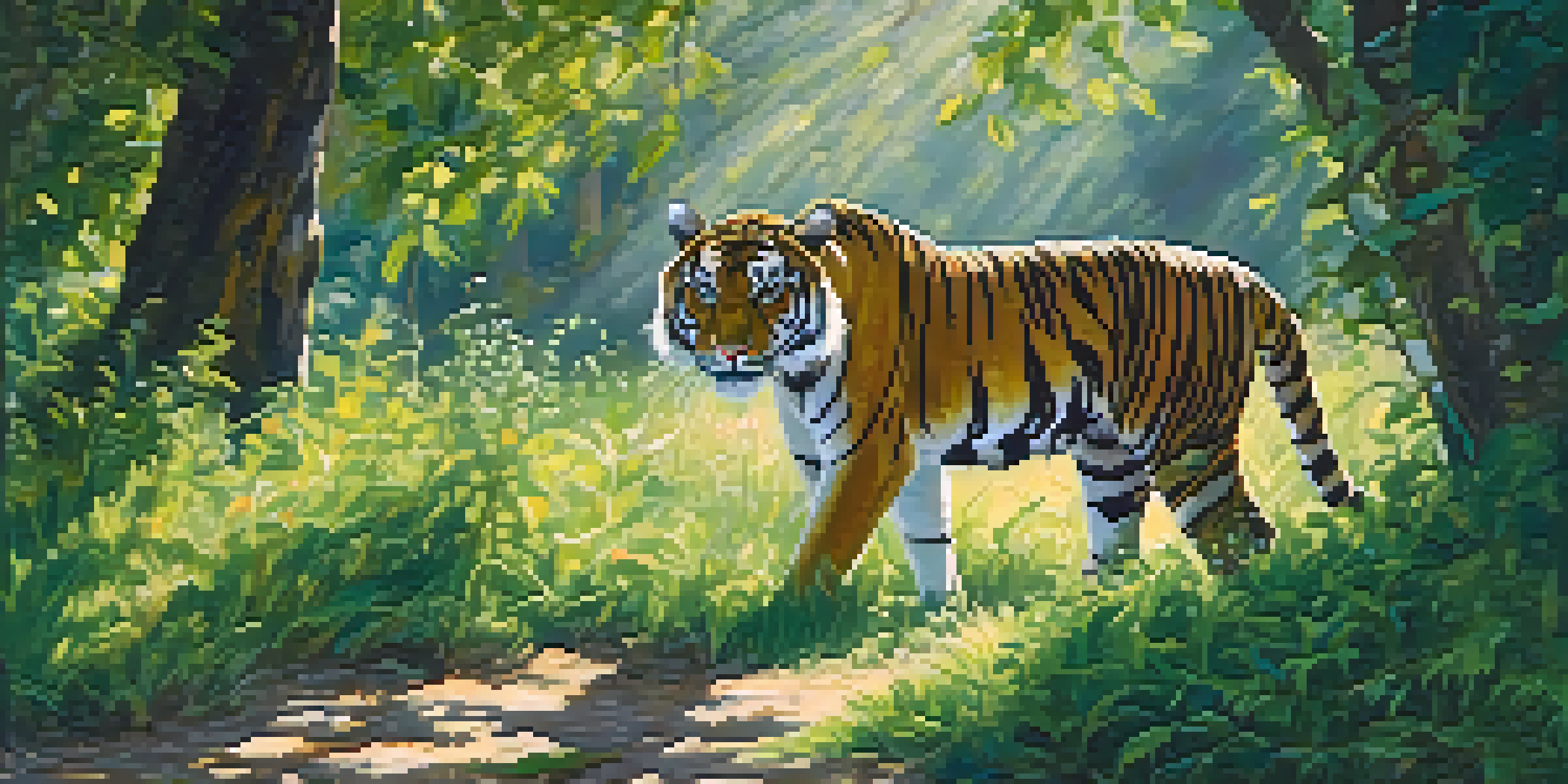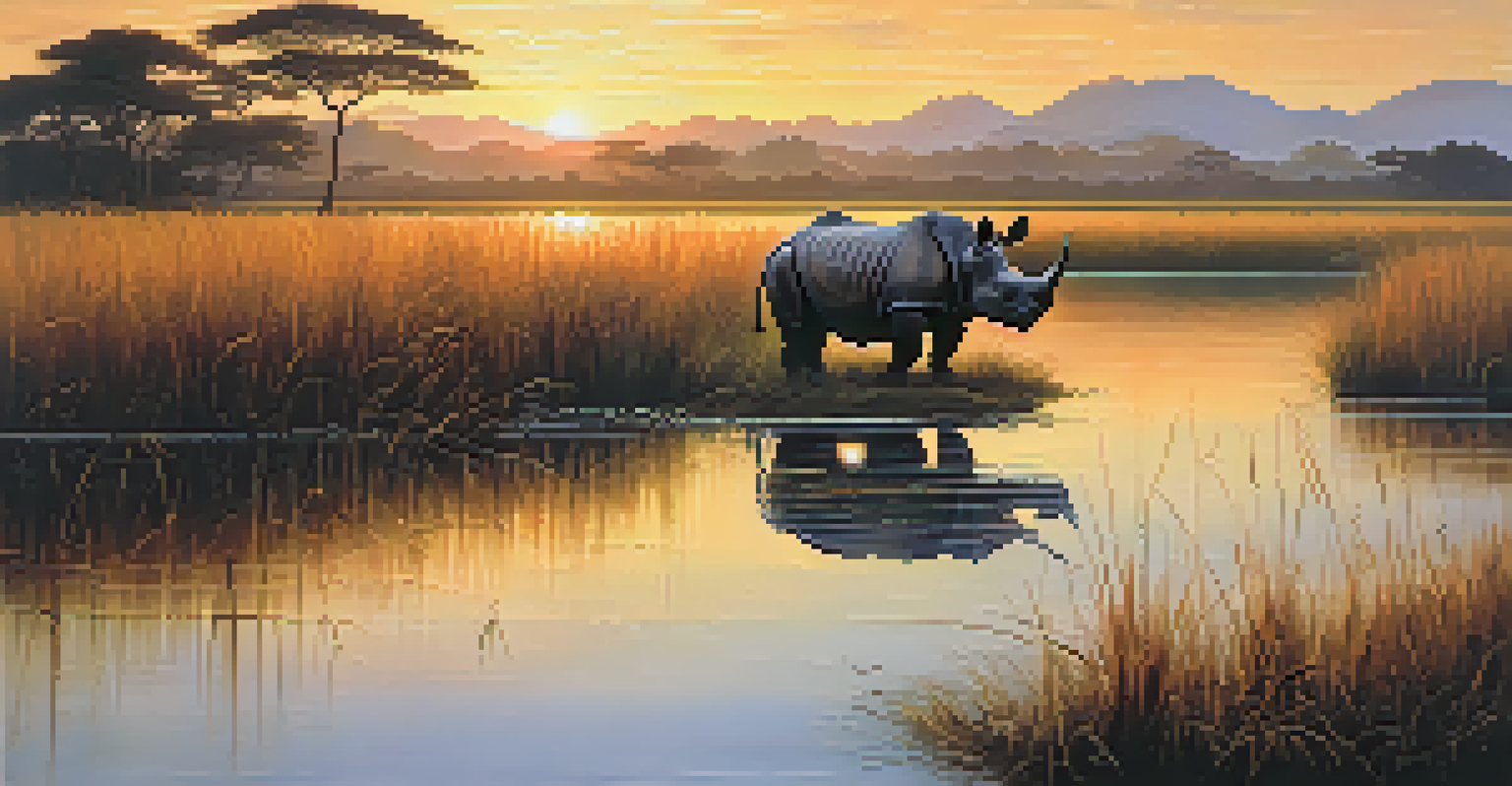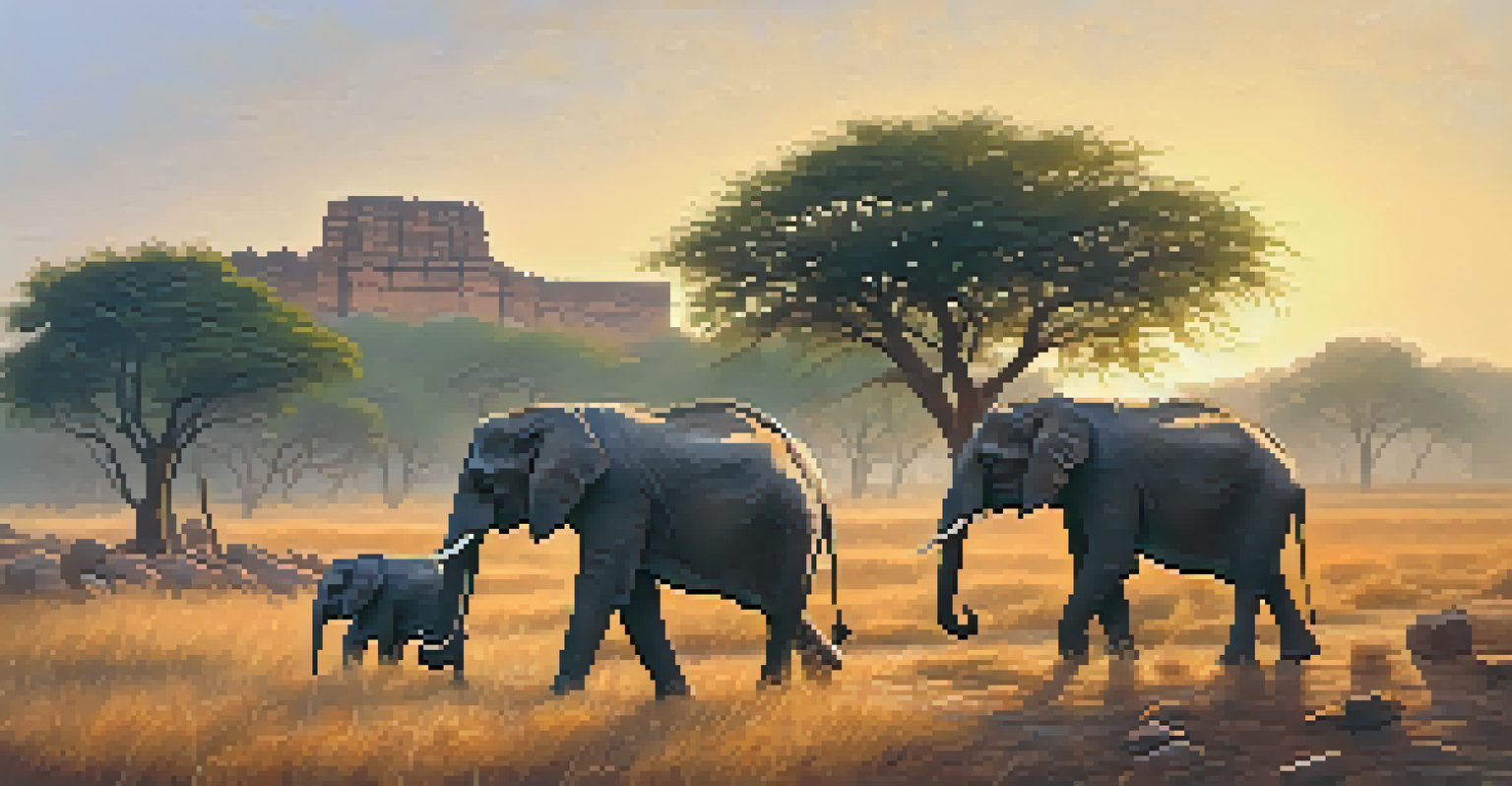Wildlife Photography Tours Focusing on India’s Unique Fauna

The Allure of Wildlife Photography in India
India is a treasure trove of biodiversity, making it a prime destination for wildlife photography enthusiasts. From the majestic Bengal tiger to the elusive snow leopard, the variety of species is simply staggering. This rich tapestry of wildlife is not just visually stunning but also offers countless opportunities for photographers to capture breathtaking moments.
In every walk with nature one receives far more than he seeks.
Wildlife photography in India goes beyond just taking pictures; it’s about immersing oneself in nature and understanding animal behavior. Each click of the camera can tell a story—whether it’s a bird in flight or a family of elephants roaming the plains. This connection with nature elevates the experience, making it unforgettable.
Tour operators in India often cater specifically to photographers, providing tailored experiences that maximize your chances of capturing that perfect shot. From early morning safaris to late-night excursions, these tours are designed with the photographer's needs in mind.
Best Locations for Wildlife Photography in India
India boasts a plethora of national parks and wildlife sanctuaries that are ideal for photography. Notable among these is Jim Corbett National Park, known for its rich flora and fauna, particularly the Bengal tiger. Each location offers unique landscapes and animal species that make every trip distinct.

Kaziranga National Park, a UNESCO World Heritage Site, is famous for its population of the one-horned rhinoceros. Photographers flock here not just for the rhinos, but also for the park's stunning landscapes, including lush grasslands and wetlands. This diversity allows for creative shots that showcase both the animals and their habitats.
Top Wildlife Photography Locations
India offers diverse national parks like Jim Corbett and Kaziranga, each providing unique opportunities for stunning wildlife photography.
Another gem is Ranthambore National Park, which provides the chance to photograph tigers amidst ancient ruins. The juxtaposition of wildlife and historical architecture creates dramatic compositions that are sure to impress. Exploring such locations enriches the photographer's portfolio and experience.
Understanding India's Unique Fauna
India is home to some of the most unique species in the world, many of which are endemic to the region. For instance, the Nilgiri Tahr, a mountain goat found in the Western Ghats, showcases the incredible adaptations of animals to their environment. Understanding these unique traits can enhance your photography by allowing you to capture their essence.
The wildlife photographer is the eyes and ears of the world when it comes to conservation.
Additionally, the diversity in ecosystems—from deserts to rainforests—supports a wide range of wildlife. This means that each species has its own story and habitat, providing photographers with various settings to work with. Learning about these ecosystems can help you anticipate where to find certain animals.
Engaging with local conservation efforts can also provide insights into the challenges these animals face. By understanding their plight, photographers can capture not just their beauty but also their vulnerability, creating a narrative that resonates with viewers.
Essential Gear for Wildlife Photography Tours
Having the right equipment is crucial for capturing stunning wildlife photos. A DSLR or mirrorless camera with a versatile zoom lens can make a world of difference. A lens that reaches at least 300mm will allow you to photograph animals from a safe distance without disturbing them.
In addition to the camera and lens, consider bringing a sturdy tripod for stability, especially in low-light conditions. A good pair of binoculars can help spot wildlife before they come into view, giving you a head start on getting that perfect shot. Don’t forget extra batteries and memory cards, as wildlife photography often means long hours in the field.
Essential Gear for Photographers
Investing in the right equipment, including a DSLR camera with a zoom lens, is crucial to capturing breathtaking wildlife images.
Also, think about protective gear for your equipment, especially if you’re photographing in challenging weather. Rain covers and lens hoods can protect your gear from moisture and dust, ensuring your equipment stays in top shape throughout the tour.
Tips for Capturing Stunning Wildlife Shots
Patience is key in wildlife photography. Animals don’t always pose perfectly, so it’s important to be prepared to wait for the right moment. Observing their behavior can lead to remarkable shots that showcase their natural instincts and interactions.
Another essential tip is to pay attention to lighting. The golden hours—early morning and late afternoon—offer the best natural light for photography. Soft, diffused light enhances colors and reduces harsh shadows, making your images more captivating.
Lastly, composition plays a vital role in storytelling through your photos. Using the rule of thirds can help create a balanced image, while framing your subject can add depth. Remember, a well-composed photograph can evoke emotions and draw viewers into the scene.
The Role of Conservation in Wildlife Photography
Wildlife photography can play a significant role in conservation efforts. By capturing the beauty of wildlife, photographers can raise awareness about endangered species and their habitats. These images can inspire people to support conservation initiatives, helping to protect the very animals that photographers seek to capture.
Many wildlife photography tours also emphasize responsible practices, encouraging participants to respect local ecosystems and wildlife. Understanding the impact of human activity on these habitats is crucial for both photographers and the environment. This knowledge fosters a sense of responsibility towards preserving these beautiful locations.
Conservation Through Photography
Wildlife photography not only captures beauty but also raises awareness for conservation efforts, inspiring action to protect endangered species.
Engaging with local communities during your tours can also enhance your understanding of conservation efforts. Many communities are working tirelessly to protect their natural surroundings, and your support can make a difference. By sharing their stories through your photography, you can contribute to a larger narrative that promotes conservation.
Planning Your Wildlife Photography Tour in India
When planning your wildlife photography tour, consider the time of year and the specific locations you want to visit. Different seasons offer unique wildlife sightings, so research migration patterns and breeding seasons to maximize your experience. For example, visiting during the monsoon can yield lush landscapes and vibrant animal activity.
Choosing a reputable tour operator is also essential. Look for companies that specialize in wildlife photography, as they often provide expert guides who can enhance your experience. They can also help navigate the best times and places to capture stunning images.

Lastly, pack wisely for your adventure. Comfortable clothing, good walking shoes, and essentials like sunscreen and insect repellent will make your experience more enjoyable. By being well-prepared, you can focus on what matters most—capturing the incredible wildlife of India.